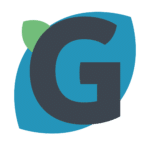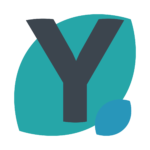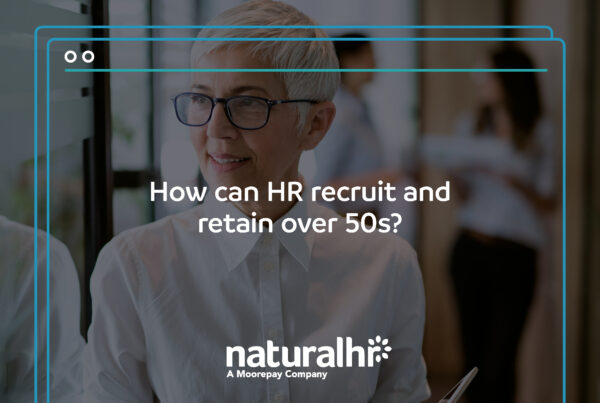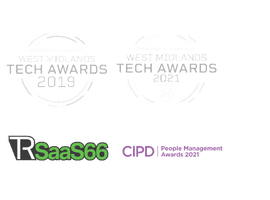
HR terms and phrases you need to know in 2023
An accessible and inclusive guide of all things HR straight from the experts.
In today’s ever-changing business landscape, the importance of Human Resources (HR) professionals cannot be overstated. After all, they are responsible for shaping organisational culture, attracting and retaining top talent, and driving employee engagement and productivity. But, it doesn’t stop there.
HR covers an endless number of people-related functions, from protecting employees’ data and managing compensation and benefits to prioritising inclusion & diversity and eliminating unconscious bias.
Therefore, in this A – Z guide, we will explore and highlight the multifaceted aspects of the HR industry and shed light on how HR technology has become an indispensable tool in achieving organisational objectives.
With each letter, we will delve into how HR technology has transformed traditional HR processes into streamlined, data-driven, and employee-centric practices.
Whether you’re an HR professional seeking to optimise your practices or a business leader looking to create a high-performing and engaged workforce, this guide will provide valuable insights to navigate the dynamic landscape of the HR industry in 2023.

Absenteeism
Employee absenteeism can be challenging for any organisation to manage effectively. Employees can be absent for several reasons, and the absence can be for just one day here and there or for longer periods of time. These are categorised as short-term and long-term absences. Short-term absence is any absence that is for a day or two over a period of occasions whereas long-term absence is considered to be any absence that is over a duration of time, for example several consistent days, weeks, or even months. How these are managed can often be very different. The organisation has a responsibility for all employees and their duty of care, not only to the employees who are absent from work but also for the employees who remain in the organisation and who’s workloads are being affected by absent colleagues.
It’s an essential metric to track because high absence rates could point to several different problems that an employee might be encountering at work or in their personal life, driving them to be absent from work on a regular basis. This can also be a contributing factor to attrition rates within an organisation. Therefore, absenteeism must be identified early and managed before it’s too late.
But without the right recording and monitoring processes in place, it can be difficult to track. With HR software, professionals can use absence management tools to identify patterns of habitual absenteeism, better understand records and help resolve and reduce this in the workplace.
With the system initially collating the data, HR professionals are presented with visual evidence-backed records that they can use to raise the issue with individuals when needed. They can set up proactive alerts for managers, through triggers, which will prompt the conversation and allow those individuals to open up about the reasons for their consistent absence.
Although many businesses will have a process for managing employee absence, it isn’t easy to identify patterns and trends, which can then be used to initiate positive changes to working environments. For example, if several employees are experiencing issues with work hours or the lack of flexibility in their schedule, businesses can make insight-led decisions about implementing flexible working arrangements.
Ultimately, absence management tools can help organisations foster a culture that better engages and motivates their staff.
You may be interested in:

Burnout
Burnout needs to be prevented before it’s too late. Employers need to understand what people value at work, their objectives and goals, how they are tracking against these and the general feeling in teams.
HR teams with technology at their disposal are better equipped to avoid burnt-out workforces, than those without. They can use surveys and pulse feedback to understand current perceptions of work in general, company initiatives, benefits and wellbeing packages.
HR software will allow you to anonymously report on employee sentiment, giving staff the chance to share true thoughts and feelings through the system. HR professionals can then use this data to book regular check-ins with individuals and teams and review target trackers to understand where people may need more support and training to achieve their goals.
They can also use this data-led insight to spur changes that will make a difference to employees, by understanding what is truly valued and acting upon it to avoid staff burnout.
Burnout is a prolonged state of exhaustion – which can be physical and mental – often related to the stresses of a job role.
This could be directly linked to a feeling of being overwhelmed by workload or caused by other factors such as unfair treatment, poor communication from managers, confusing responsibilities or deadline pressure.
Burnout causes people to be less productive as they suffer from reduced energy and feelings of hopelessness, cynicism and resentment towards their job.
There are three types of burnout to consider:
- Overload burnout: when employees work harder and harder, becoming frantic in trying to achieve their goals.
- Under-challenged burnout: when staff feel undervalued, underappreciated, see a lack of progression opportunities or are simply bored of work.
- Neglect burnout: when employees feel helpless at work, experience a feeling of incompetence or are unable to keep up with everything when things aren’t going right. This is closely linked with imposter syndrome.
You may be interested in:

Compensation & Benefits
Compensation refers to the reward you receive for the work you do in your role, such as the salary you’re paid and bonuses you receive. On the other hand, benefits are non-financial perks that are given to employees in appreciation of their work for the business.
Some common examples of benefits that are free to implement are things like flexible or remote working, subsidised or free food in the office, or dress-down days. We are now seeing the rise of salary sacrifice or employer funded benefits, with employees opting for things like private medical, gym memberships and car schemes. And in the current candidate-driven market, employers must offer an enticing and relevant proposition when it comes to compensation and benefits packages, as these could set companies apart from the competition.
Employees and employers love these benefits as they’re tax and NI efficient. Also, if pitched correctly to employees, they can go some way to offsetting the demand for salary increases.
Now, whilst experiencing the cost-of-living crisis and more challenging circumstances, it’s less about whether employers offer unlimited holidays, for example, and more about showing empathy towards staff needs whilst helping pay go further.
This will require employers to be more creative in showing their commitment to their people, and this can’t be as rigid as it once was. With flexible working now the norm across many organisations, employees are looking for softer benefits that complement this seismic shift, such as wellbeing days or mental health support, for example.
Due to this change in demand, we are starting to see a move away from blanket benefit packages for all staff, and instead, employers are asking staff what individual benefits they want in accordance with their current lifestyle. This will no doubt add to the competition in the job market in the future, as this spurs passion and enthusiasm for where people work.
Therefore, organisations must have the tools in place to better manage flexible benefits and be more upfront about what they have to offer. HR professionals can send out surveys to collect employee feedback about the current C&B package and what they would like to see in the future.
HR & payroll systems can link into the benefits package through open APIs. That means employees can see their company benefits above and beyond their monthly salary. Payroll benefits from having these contributions and salary sacrifice benefits automatically deducted from pay and visible on employee payslips. HR teams, on the other hand, can quickly share and signpost paid and unpaid company benefits, better supporting employees.
It’s not just platform integration, clever HR systems will allow wellbeing days, or flexible working days to be scheduled in workplace calendars so these can be tracked properly, making it easy for managers to oversee differing employee schedules.
HR software empowers employers to better understand their employees’ wants and needs to create a more positive and productive work environment that rewards and helps staff in relevant ways.

Data Privacy
Data privacy refers to an individuals’ ability to determine how their personal data is used and shared, both in their work environment and personal lives. Since the introduction of GDPR in 2018, there has been some uncertainty surrounding data privacy. HR professionals handle a significant amount of personal data, including employee and job applicant information, and are responsible for enforcing their organisation’s data policies. Therefore, it is crucial to identify the data that needs protection, communicate relevant information to employees, and ensure compliance with appropriate procedures.
Data breaches pose significant risks to businesses – including fraud and identity theft. Mishandling data can lead to information being leaked, impacting individuals’ lives and resulting in severe consequences for the company. In certain sectors, the reputational damage caused by a breach can be crippling – that’s before you consider the financial repercussions, which could be a fine of up to 4% of a company’s annual turnover.
This is why data privacy should be a high priority for all organisations. From a company’s standpoint, if data is stored, precautions such as anonymisation, encryption, anti-virus protection, and other measures to comply with GDPR should be considered.
Due to their role, HR professionals have access to a significant amount of sensitive data and must understand how to use and store it appropriately. Therefore, it is important to educate people on what data needs to be secured, as any remotely identifiable information needs to be protected.
Access control is vital from a data protection perspective. For example, HR-related information, such as medical records, should not be shared with colleagues or managers who aren’t on a need-to-know basis, as this could influence workplace dynamics.
HR software plays a vital role in this by allowing HR to grant different levels of access based on job roles, ensuring that confidential information remains restricted to authorised personnel only.
Compliance and auditability are also crucial. Some HR technologies – including Natural HR – allow all activities involving data to be recorded in an audit log. This log captures changes in details, salary, job roles, and other amendments, ensuring data integrity and providing an audit trail.
It’s essential that organisations take data privacy seriously. Even the smallest mistake can result in a very big problem. But, some of the weight can be lifted from HR professionals’ shoulders by utilising HR technology that provides greater security than traditional processes and systems and ensures data is only accessed by authorised individuals.
You may be interested in:

Emotional Salary
As discussed in Compensation and Benefits, HR software allows employers to collect data on what employees value through feedback and pulse surveys, and make changes to initiatives and offerings to reward staff for their contributions to the company.
This is a relatively new concept that encourages alternative forms of compensation – not salary – for work. Rather than economic compensation, emotional salary focuses on people’s level of comfort, satisfaction and wellbeing at work.
Some examples of emotional salary could include supporting employees with a home office, flexible working schedules, professional development plans, or leisure spaces.
You may be interested in:

Flexible Working
Flexible working refers to arrangements between workers and employers that allow for adjustments in working hours to accommodate personal needs. Traditionally, this has involved flexible hours, where start and finish times can be modified to accommodate childcare or other requirements. However, in the aftermath of the Covid pandemic, remote working has become a prominent aspect of flexible working, with teams having the ability to work from home either part-time or full-time.
Flexible working provides employees with the freedom to choose where they work, enabling them to better manage their personal lives and achieve a work-life balance. HR technology plays a crucial role in facilitating and managing flexible working arrangements. It allows HR teams to effectively manage employees working on different schedules and maintain open lines of communication with remote workers. By using a centralised system, both employees and HR teams can access and share relevant information easily from anywhere.
HR systems also enable the tracking of employees’ working hours, accommodating non-traditional schedules that may not adhere to a strict 9-5 timeframe. In Natural HR, timesheets can be used to monitor the allocation of hours worked, even if they do not follow a particular pattern.
Additionally, new features such as status updates on Natural HR allow employees to indicate their current work location, whether it’s at home, remote, or on a client visit. This enhances transparency and enables colleagues to know where their coworkers are based.
HR technology also simplifies the storage and distribution of contracts related to flexible working. Contracts can be easily stored in the system and quickly sent to employees who need to sign new flexible contracts.
HR software facilitates the implementation and management of flexible working arrangements, enabling employees to work in a manner that suits their personal needs and providing HR teams with the necessary tools to support and administer these arrangements effectively.
You may be interested in:

Gen Z
Generation Z – referring to individuals born between the late 1990s and early 2010s – makes up a significant portion of the workforce at 38% worldwide, with this expected to rise to 58% by 2030. As this generation becomes more prevalent in the workplace, employers need to adapt to their expectations and preferences to accommodate Gen Z’s agile mindset when it comes to work.
Naturally, Gen Z individuals are tech-focused, having grown up in the digital age, and prioritise efficiency and productivity enabled by technology. They also value remote working as a desirable factor in job roles from having experienced this throughout the pandemic. So, businesses need to move with the times, or risk getting left behind when it comes to attracting and retaining talent.
Fortunately, HR technology can help organisations manage Gen Z employees effectively. For example, Gen Z individuals are familiar with technology and may prefer to request holidays and manage their HR profiles independently. This is particularly true when working from home or other locations where they cannot speak to an HR representative directly.
Onboarding processes can also be enhanced by utilising HR software to ensure new hires understand and integrate with the company culture before their first day. Employee engagement announcements and company documentation can be centralised and easily accessible through HR platforms, catering to the hybrid working environment.
It can also help businesses navigate new phenomena like ‘Quiet quitting’ which has been observed in organisations employing Gen Z employees. This refers to the act of fulfilling their bare-minimum job requirements without going above and beyond. HR software can help map out and clearly communicate expectations – including break schedules and job requirements – which can cater to Gen Z’s preference for clarity.
Competencies and skills features in HR technology enable employers to track and score employees against role requirements and goals. This helps identify any gaps in skills and competencies, allowing organisations to support Gen Z employees in their professional development.
Other features like generational reports – available in HR platforms like Natural HR – allow organisations to analyse and report on the different generations within their workforce, including Gen Z. This can provide insights into differences and preferences among employees from different generations, allowing businesses to make changes in line with these results.
HR technology plays a crucial role in managing and empowering Gen Z employees in the workplace by aligning with their tech-focused preferences, providing insights through generational reports, enabling self-service capabilities, and tracking competencies and skills against role requirements.
You may be interested in:

HRIS System
Human Resources Information Systems are pieces of software that organisations use to collect and store data about their employees. It boosts record-keeping, compliance with data privacy laws and other legislation as well as efficiency in businesses to help streamline their HR processes and get the best out of their teams.

Diversity & Inclusion
Diversity and inclusion (D&I) have become increasingly important for employers, ensuring that individuals are not excluded from opportunities based on factors such as race, sexuality or gender. Legislation mandates greater transparency regarding workforce diversity and inclusion.
HR software can play a crucial role in managing D&I efforts, whilst simplifying the process of generating and delivering diversity reports, which may be required by governing bodies.
Real-time dashboards can provide data on the composition of the workforce, which can be shared with managers to promote transparency and awareness. This data can inform business decisions and guide recruitment strategies by helping leaders identify diversity gaps and address them through targeted hiring initiatives.
D&I efforts also extend to addressing unconscious bias. Blind recruitment practices – enabled by HR software – during the selection process create fairer processes by anonymising candidate information and focusing on qualifications and skills rather than personal characteristics.
Additionally, HR technology enables organisations to evaluate and address disparities in salaries and job specifications. It can provide insights into industry trends, such as the sectors with the greatest and least progress in addressing pay gaps.

Job Evalution
Job evaluation is the process of determining the value of different roles within an organisation to establish a fair and consistent pay structure. It involves comparing roles based on responsibilities, workload, skills, competencies, and business expectations. Evaluating jobs externally against competitors and local market conditions is also essential to ensure competitive pay offerings, especially in fields with skill shortages.
HR technology facilitates job evaluation by providing a platform to assess and define the requirements and expectations of each role. In Natural HR, for example, it allows organisations to set up separate categories for skills and competencies. Competencies represent accredited skills, while skills encompass soft skills, such as communication and conflict management. By aligning these requirements with job roles, HR software can assist with recruitment by identifying the closest match between candidates and specific job requirements.
HR software also supports internal job evaluation processes by ensuring employees have appropriate workloads, responsibilities, and fair compensation for their roles. It enables performance reviews and tracking against goals and targets. Additionally, HR technology aids in maintaining external competitiveness by comparing job roles within the industry and ensuring realistic expectations for new job postings.
You may be interested in:

KPIs
Key Performance Indicators (KPIs) are mutually agreed targets between employers and employees that enable continuous measurement of performance. This approach benefits both parties, as employees can contribute to setting reasonable targets that motivate them, while employers can track progress and hold employees accountable.
HR software allows organisations to define acceptable levels of metrics – such as absence or staff turnover – and track them in real-time using dashboards. Baselines can be established, and progress can be plotted against these benchmarks.
Employee-specific KPIs are closely linked to performance management. They provide a means for assessing individual performance against set goals and identifying areas where employees may require additional support or skills development. HR platforms, like Natural HR, facilitate the tracking and evaluation of employee performance against their KPIs.

Learning & Development
Learning and development (L&D) is a fundamental aspect of HR management, involving investments in employee training and skill enhancement. It benefits both individuals and the company by developing employees’ competencies, knowledge, and overall skill set. L&D plays a crucial role in succession planning and futureproofing, contributing to a resilient workforce.
L&D initiatives contribute to a culture change in performance management, shifting from a focus on discipline to personal development, milestone achievement, and additional training. This approach enhances retention rates by demonstrating that the company invests in employees, equipping them with transferable skills and fostering career growth.
HR technology facilitates L&D by linking required training to specific job positions and making it available for self-service. Employees can access training materials, as well as request additional training opportunities that may not be directly linked to their role. L&D is closely connected to performance management and KPI’s, as it involves tracking goals and objectives.
Succession planning is another area where L&D and HR technology intersect. Employees can clearly see the requirements for career progression, such as achieving specific competency scores. This transparency benefits both managers and employees by providing a clear pathway for advancement.
You may be interested in:

Millennials
Millennials make up the generation before Gen Z , comprising of people born between the early 1980s and the mid-1990s. This demographic recently came to make up more than half of the workforce, so they will likely have the most influence in the cultures and working environments of the majority of organisations.
HR technology will allow HR professionals to evaluate how many staff are millennials through dashboard reports and cut data from surveys to determine thoughts and feelings about company initiatives and benefits, for example, from these employees.
It could be particularly helpful when comparing different generational views about certain topics internally.
You may be interested in:

New Initiatives
Introducing new initiatives to businesses requires careful planning and effective management. HR technology can play a crucial role in facilitating and streamlining this process. With the right HR software, businesses can effectively communicate and roll out new initiatives to employees, ensuring clear understanding and engagement.
HR technology enables efficient tracking of progress and performance related to the new initiatives, providing real-time data and analytics for evaluation and adjustments. It can also support the training and development needs associated with the initiatives, offering self-service learning resources and tracking employee participation.
It can empower businesses to effectively introduce and manage new initiatives, fostering a culture of innovation and continuous improvement.

Onboarding
Onboarding refers to how an organisation integrates new hires into the team. This plays a critical role in setting the tone for an employee’s experience within a business. It is a process that encompasses much more than simply completing paperwork and undergoing initial training. It is about making new hires feel welcomed, valued, and prepared to contribute effectively to the company’s goals.
HR software can significantly enhance the onboarding process by providing a range of tools and features that streamline administrative tasks and create a positive employee experience.
One of the key benefits is its ability to support virtual onboarding. With the rise of remote and flexible work arrangements, HR software enables companies to easily send important documents such as contracts, policies, and training materials to new hires electronically. This allows them to review and complete the necessary paperwork conveniently and efficiently, regardless of their location. It ensures that all required documentation is standardised, tracked, and completed before new employees officially start work, reducing administrative burdens and ensuring compliance.
HR software also provides a platform for communicating the company’s vision, values and culture to new employees. Through intranet pages or portals, businesses can showcase their mission, share messages from executives or team leaders, and provide access to resources that reinforce the organisation’s culture. This helps create a sense of belonging and connection, allowing new hires to align themselves with the company’s goals and values right from the start. HR can supply further information like what to expect and bring on the first day, helping new hires feel more prepared and comfortable as they join the organisation.
From a time and efficiency standpoint, it automates tasks such as record-keeping, compliance tracking, and training management, freeing up valuable time for HR professionals to focus on more strategic initiatives.
With HR software, onboarding becomes a more streamlined and standardised process, enabling HR teams to efficiently manage a large volume of new hires and deliver a consistent onboarding experience across the business.
You may be interested in:

Presenteeism
The other side to absenteeism is low absence and this is called presenteeism. This can be as much of a management challenge as absenteeism. Presenteeism is when employees feel compelled to attend work even when they are sick due to feeling pressured to work by their organisation or manager. This may even mean employees aren’t taking their breaks or paid holiday leave which is their statuary right. It can lead to reduced productivity, increased likelihood of errors, and, in the case of illness, can result in the spread of illness throughout the team.
A healthy organisation needs to effectively manage all levels of absenteeism and presenteeism by ensuring that employees feel supported at all times.
The rise of remote working has also introduced new challenges, such as presenteeism on camera, where employees attend virtual meetings but are not fully engaged – referred to as ‘camera off syndrome’.
HR software can help identify patterns and trends of presenteeism by enabling regular reviews and tracking employee performance. One-on-one meetings become essential for understanding and addressing any personal or work-related issues affecting employees. It is crucial for organisations to recognise the importance of open communication and supportive measures to mitigate presenteeism and promote employee wellbeing.
You may be interested in:

Quantitive v Qualitative Data
Quantitative data refers to measurable information that is numerical or countable, making it easy to record, track, and analyse. On the other hand, qualitative data is descriptive and based on interpretation, providing context and detailed insights that numbers and charts may not capture.
With Natural HR, the reporting capabilities are robust, offering various ways to view data, such as charts and graphs, in real-time through interactive dashboards. This allows for monitoring of quantitative information like employee metrics – such as holiday allowances – and qualitative data can be analysed to identify workforce trends and address issues before they escalate by setting up triggers within the platform.
For example, if multiple employees raise tickets regarding a specific issue, proactive measures like targeted training can be implemented, or employee absences can be tracked and HR managers can be alerted when this reaches a certain threshold.
Natural HR also gathers data from clients through our support site, enabling them to request new functions or features, and the company can take action based on widespread issues or requests.

Recruitment Applicant Tracking
Recruitment applicant tracking is the process of managing and monitoring the various stages and information related to job applicants during the recruitment process. It involves collecting and organising candidate data, tracking their progress, and ensuring a smooth and efficient hiring process.
HR technology can play a crucial role in supporting recruitment applicant tracking by providing the following:
- Centralised candidate database: HR software provides a centralised database to store applicant information, including resumes, application forms and candidate profiles. This makes it easy to search, filter, and access candidate data when needed.
- Streamlined application process: HR technology enables the creation of online application forms and job postings, making it convenient for candidates to apply digitally. This streamlines the application process and ensures that all necessary information is captured accurately.
- Automated screening and shortlisting: With HR software, recruiters can set up predefined criteria and automate the initial screening of applicants. This helps in quickly identifying qualified candidates and shortlisting them for further evaluation.
- Collaborative hiring: HR technology facilitates collaboration among hiring team members. It allows multiple stakeholders to review and provide feedback on applicants, share interview notes, and collaborate on decision-making.
- Interview scheduling and communication: Recruitment software often includes features for scheduling interviews, sending automated email notifications, and managing communication with candidates. This reduces manual effort and ensures timely and consistent communication throughout the recruitment process.
- Performance analytics: It can provide analytics and reporting capabilities to track recruitment metrics, such as time-to-fill, source of applicants, and cost-per-hire. These insights help in assessing the effectiveness of recruitment strategies and making data-driven decisions for process improvement.

Strategic Staffing
Strategic staffing focuses on ensuring that the business has the necessary workforce to effectively achieve its objectives. It involves considering the workforce as a critical component of growth plans, identifying the right individuals for the business, determining when to onboard them, and understanding how they fit into the broader team in the long run. The goal is to identify current and future gaps within the organisation and effectively fill them with the right talent at the right time.
Natural HR offers new tools to support strategic staffing. This involves defining job roles and competencies – including skill levels – and assigning scores based on these levels. It also integrates with succession planning, allowing organisations to identify potential successors for key roles.
Visual representations – such as graphs – can be used to map progression and identify areas of growth across the entire team. This information can then inform recruitment decisions, ensuring that new hires align with the specific needs of the business.
You may be interested in:

Talent Management
Talent management software aims to streamline the employee lifecycle, covering various stages from recruitment to offboarding. It provides HR professionals with tools to effectively manage employees throughout their time in the company, including areas like learning and development, compensation, performance and succession planning.

Unconcious Bias
Unconscious bias in organisations refers to the subtle biases and stereotypes that individuals hold, often without conscious awareness, which can influence their decisions and behaviours. These biases can impact various aspects of the workplace, including recruitment, promotion, performance evaluations and opportunities for development.
One common example of unconscious bias is the tendency to make associations or assumptions based on certain demographics, such as gender, race or social background. These biases can lead to favouritism, discriminatory practices, and hinder diversity and inclusion efforts within the business.
To mitigate the impact of unconscious bias, HR technology plays a crucial role. By anonymising information during the recruitment process, HR software helps to remove personal identifiers, such as names, gender, or ethnicity, and focuses solely on the qualifications, skills, and experiences of candidates. This approach enables a more objective evaluation of candidates based on their abilities rather than their background.
HR platforms can support businesses in promoting fairness and equality by providing data analytics and reporting capabilities. These features allow HR professionals to track and analyse patterns of bias, identify areas where it may occur, and take proactive measures to address it. By examining recruitment and promotion processes, performance evaluations, and learning and development opportunities, organisations can identify and rectify any biases that may exist.
By leveraging HR technology to address unconscious bias, leaders can create a more inclusive and equitable work environment. They can foster a culture where decisions are made based on merit, diversity is valued, and opportunities for growth and advancement are accessible to all employees. Ultimately, combating unconscious bias contributes to a more diverse and talented workforce, leading to enhanced creativity, innovation, and overall organisational success.
You may be interested in:

Virtual Teams
The rise of virtual teams has become a common phenomenon in today’s world, with companies leveraging technology to connect with their teams working from different locations. Whilst virtual teams provide flexibility for employees to work from anywhere, reduce expenses associated with physical office spaces and allow businesses to recruit talent globally rather than locally, effective management and communication are essential to overcome potential challenges.
HR technology plays a vital role in managing remote workers by providing features such as time tracking, performance monitoring, training management and centralised storage of employee information, to name a few. HR software has evolved to meet the needs of remote work, allowing HR professionals to access and store documents digitally, ensuring compliance with guidelines, and avoiding duplication of work.
The shift from physical to digital storage for HR has been significant and ongoing, and HR professionals have relied on technology to streamline their processes and maintain an audit trail of activities. Overall, HR technology facilitates efficient management of virtual teams, enhances collaboration, and ensures compliance with remote work guidelines.
You may be interested in:

Wellbeing
Employee wellbeing encompasses both physical and mental health and has become a significant focus for organisations in recent years. Recognising that a healthy workforce leads to increased productivity and reduced absences, companies have started investing in creating supportive work environments.
Since the pandemic, mental health has emerged as a top priority, with businesses taking proactive measures to support employee wellbeing. HR professionals have helped launch new benefits and initiatives focused on improving mental health, like offering free counselling sessions to those who need it, 24/7 employee assistance programmes (EAP) and things like mental health first aiders or wellbeing days.
Financial wellbeing has also gained importance, with employers addressing the cost of living crisis and offering resources and education to improve employees’ financial health.
HR technology can help roll out and communicate wellbeing initiatives to ensure employees are aware of them and understand how to access them. For example, you can utilise company intranets to provide relevant documents and information, signpost to EAP programmes and promote internal wellbeing activities. Whilst quick set-up of discounts modules can support employee financial wellbeing and make employee pay go further.
By prioritising employee wellbeing and leveraging HR technology, organisations can foster a positive work environment and support the holistic health of their workforce.
You may be interested in:

XML
Extensible Markup Language (XML) is a new, simple text-based computer format for representing structured information: documents, data, configuration, books, transactions, invoices, and much more.
In an HRIS context, this enhances the exchange of information such as purchasing and expense data and the potential for integrations with security systems and payroll applications.

Year-to-date
Year-to-date (YTD) refers to the period from the beginning of the current year to the present date and is commonly used in finance and accounting for reporting and analysing business performance.
YTD data is valuable for tracking trends, estimating tax payments, evaluating investment returns, and monitoring payroll. It allows businesses to generate various reports such as commission payouts, absences, and recruitment statistics. With the help of HR software dashboards, companies can access real-time data and compare it to previous periods, enabling them to make informed decisions based on comprehensive insights.
You may be interested in:

Zero-Hour-Contracts
Zero-hour contracts are employment agreements that do not guarantee a minimum number of working hours per week. They are often preferred by employers with fluctuating business demands or short-term projects, allowing for flexibility and “on-call” arrangements.
Zero-hour contracts have been a controversial topic, as some companies have been criticised for potential employee exploitation. However, regulations implemented in 2015 made it illegal to restrict employees from working with other employers simultaneously while on such contracts.
HR technology with time and attendance systems simplify the management of zero-hour contracts by enabling efficient tracking of hours worked through features like clocking in and out, ensuring effective management of employee schedules and hours.
You may be interested in:
- Zero-hour holiday entitlement calculator
We hope this guide has provided valuable insights into the diverse field of HR and inspired you to harness the power of HR technology in your business.
By leveraging modern tools and strategies, you can unleash the full potential of your workforce, foster innovation, and cultivate an inclusive work environment. Streamlining administrative tasks, automating processes, and utilising data-driven decision-making enables HR professionals to shift their focus from mundane activities to strategic initiatives like talent acquisition, employee development, and promoting a positive work culture.
As technology continues to shape the HR industry, embracing HR software becomes essential for businesses to remain competitive, attract top talent, and adapt to evolving business landscapes. Stay updated with the latest trends, embrace new possibilities, and embark on a transformative journey to enhance your HR practices with technology.







